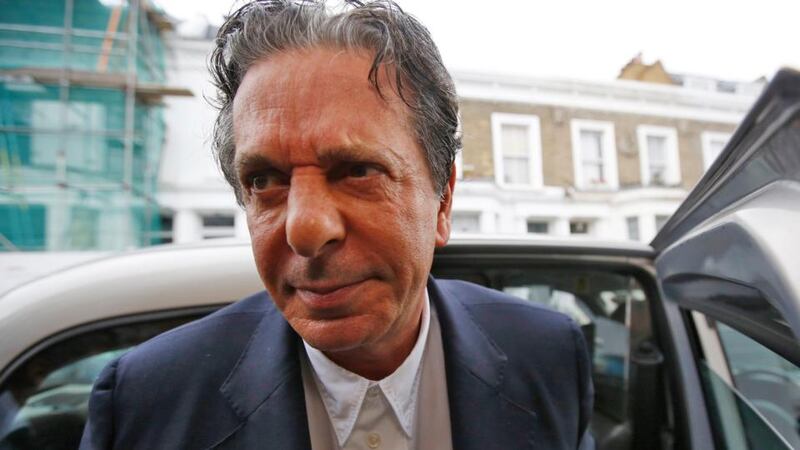When the photographs of Nigella Lawson and her husband, the art dealer Charles Saatchi, appeared online late last Saturday night, the response was instantaneous and emphatic. The images were snatched outside a London restaurant a few weekends ago and show Saatchi's hands on Lawson's throat. The pictures are disturbing. And so, too, was the rush to judgment that greeted their publication.
In the instant clamour that followed, everybody seemed to know with certainty what they would have done if they were Lawson, if they were the other diners, or the photographer, or the wait staff.
They would have left him instantly. They would have intervened. They would have reported him to the police.

But relationships are complex. Nobody other than the couple themselves can understand the dynamic at play between them.
Saatchi has claimed that what passed between them was a “playful tiff”. The expression in Lawson’s eyes, as he held her by the throat, did not look playful. When she left the restaurant in tears, she did not seem like someone emerging from a “tiff”. Hours later, on Monday afternoon, Saatchi voluntarily presented himself at a police station and accepted a caution for assault. By then, Lawson had already left the family home. In the eyes of many observers, this was as good as a judicial verdict. Saatchi the abuser. Lawson the victim. Case closed.
But we don’t actually know whether this incident was part of a wider pattern of abuse, or a one-off which, taken out of context, appeared “horrific”, to use Saatchi’s expression.
Lawson didn’t leave until a week later, and then she did so without comment. This might be because, as he said, the paparazzi had pitched up at her door. It might be that she didn’t leave before then because she was afraid, or ashamed. But it might also be because she still loves him, or because she doesn’t see herself as a victim of abuse.
There is a peculiar paradox at play in our reaction to allegations or suspicions of domestic abuse. When there are public figures involved, we are hungry for action, and impatient with victims who don’t appear to help themselves. Witness the backlash against Rihanna when she rekindled her relationship with Chris Brown. It is empathy and space that Lawson needs now – not a lecture about her duty to be a good example.
When we experience domestic abuse firsthand, we are much more likely to find ourselves mired in indecision. We tread softly; we worry that if we do the wrong thing, we might make the situation worse.
This instinct is sometimes well-advised. Domestic abuse is not like witnessing a mugging on the street; you can’t just charge in and try to stop it.
If the other people eating in the restaurant last weekend had marched up to the table and accosted Saatchi, as many have suggested they should, it would certainly have cut that one exchange short. But what would have happened then? What would have happened when they got home? Witnesses might have phoned the police, but only if they were sure about what they were seeing.
There is another useful lesson we can take from this whole episode, and it’s about our preconceptions of the “typical victim” of domestic abuse. Implicit in much of the coverage was the suggestion that Lawson has never seemed “the type”. In their desire to make sense of it, journalists plumbed old interviews for clues, dragging up mentions of her difficult relationship with her mother, for evidence of a heretofore undetected vulnerability, or references to Saatchi as an “exploder”.
This is a wasted exercise. If Nigella isn’t the type, it’s not because she is wildly successful, confident, gorgeous or wealthy. It’s not because of her filthy laugh, her air of mischief, or her wanton ways with a chocolate-covered spoon. It is because there is no type.
There are no personality traits or characteristics that render any woman or man more likely to be abused by their partner, any more than a certain type of woman is more likely to be raped; or a particular cut of a man is likely to be punched in the street by a random passer-by.
Rihanna never seemed the type until Chris Brown smashed up her face. Before last weekend, Nigella Lawson didn’t seem the type either. No one seems like the type until it happens to them.
But we’re all just a hand raised in anger away from being the type.
joconnell@irishtimes.com, @jenoconnell











